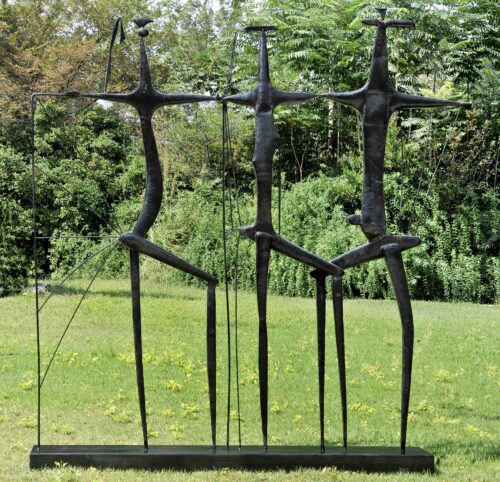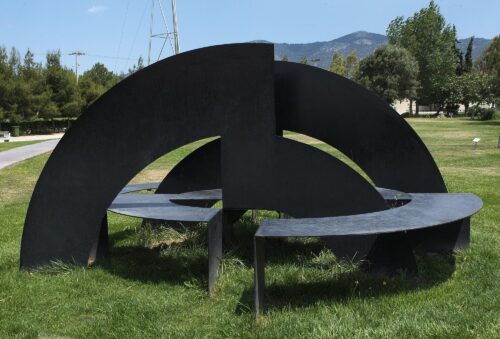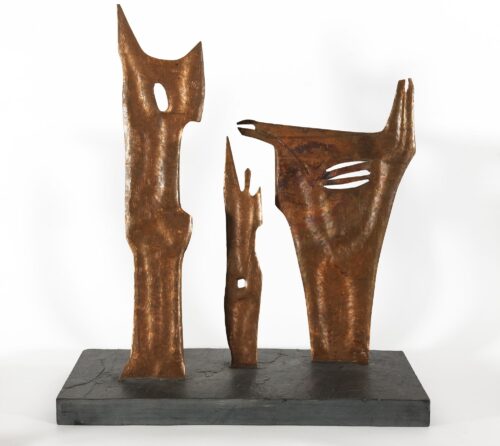
Mylona Alex (1920 - 2016)
Berioshka, 1957
She took her first painting lessons from an English painter when she was 8-10, since her parents were aware of her artistic talent, evident from an early age. In 1942, she went on to study at Athens College with Nikos Nakis, and in 1945, already mother to a child, she was admitted to the Athens School of Fine Arts, where she studied sculpture with professor Michalis Tombros. In the following years, she came into contact with Greek and international artists, including Nikos Hadjikyriakos-Ghikas, Henry Moore, Alberto Giacometti, Ossip Zadkine and Jean Arp. In 1954, she became member of the art group “To ergastiri” [The workshop]. During the same year, she won second place at the Greek national contest for the Monument to the Greeks executed by Germans in Nikaia. She is also among the founding members of the Association of Greek Women Artists, in which she became vice chairman.
Her work has been presented in solo and major group exhibitions, including Panhellenic exhibitions, the Venice Biennale (1960), the Sao Paulo Biennale (1961) and the Montreal Biennale (1968) as well as the international exhibition of contemporary sculpture “Exposition Internationale de Sculpture Contemporaine” and the exhibition “Greek Painters and Sculptors in Paris” (Peintres et Sculpteurs Grecs de Paris), mounted in the French capital in 1961 and 1962 respectively. In 1986, a retrospective exhibition of her work was organised by the National Gallery in Athens.
Beginning with works in stone or bronze, focusing on the human figure and characterized by stylisation and accentuation of volumes, Alex Mylona progressively advanced towards abstraction. Even before 1960, she had developed her own personal vocabulary, creating metal works distinguished for their expressionistic content, extreme angular appendages, highlighting the expressive possibilities of the material, all manners of contrasts, reducing the subject to an element of secondary importance, as well as suppressing the third dimension. These features, along with the reintroduction of depth in her works, would also prevail in her later production, in which a tendency towards archaic and archetypal models, such as the double axe and the cross, is also evident, while figurative elements blend with abstract themes.

Berioshka, 1957

Development of the Circle, 1986

King-Queen, 1961

We use cookies to make our site work properly, to personalize content and ads, to provide social media features and to analyze our traffic. We also share information about how you use our site with our social media, advertising and analytics partners. Read the Cookies Policy.
These cookies are necessary for the website to function and cannot be switched off in our systems. They are usually only set in response to actions made by you which amount to a request for services, such as setting your privacy preferences, logging in or filling in forms. You can set your browser to block or alert you about these cookies, but some parts of the site will not then work. These cookies do not store any personally identifiable information.
If you disable this cookie, we will not be able to save your preferences. This means that every time you visit this website you will need to enable or disable cookies again.
These cookies tell us about how you use the site and they help us to make it better. For example these cookies count the number of visitors to our website and see how visitors move around when they are using it. This helps us to improve the way our site works, for example, by ensuring that users find what they are looking for easily. Our website uses Google Analytics for statistics reporting.
Please enable Strictly Necessary Cookies first so that we can save your preferences!